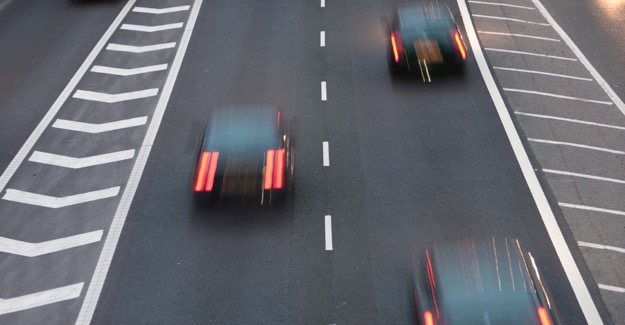Real benefits to come after 50% market penetration
Traffic flow modelling for the Department for Transport suggests that congestion could get worse before it gets better after the introduction of connected and autonomous vehicles (CAVs).
The report – which modelled both urban roads and a stretch of motorway – says marked benefits are only likely to be seen when automated vehicle penetration gets above 50% of the car fleet.
This is because up to that point CAVs are likely to drive more cautiously and defensively to take account of the mixed parc.
According to the report by Atkins:
“This results in a potential decrease in effective capacity and a decline in network performance, especially in high-speed, high-flow situations.”
However, the report also found that:
- on major roads where traditional vehicles outnumbered automated vehicles benefits are relatively small, but increase as the percentage of driverless cars on the roads increases – when measuring peak traffic periods with a maximum of up to 100% of driverless vehicles we saw journey times reduced by more than 11% and delays cut by more than 40%
- on urban roads benefits are seen in peak traffic periods even with low levels of automated vehicles on roads – benefits include a 12% improvement in delays and a 21% improvement in journey time reliability
Currently there are 31 million cars on the UK’s roads.
Responding to the report, Steve Gooding, director of the RAC Foundation, said:
“This report bears out two key things about driverless vehicles: first, that there’s a prize to be had in terms of swifter, safer journeys, but second, the transition to that world will be challenging.
“After another year of record car sales there are around 32 million conventional cars on the UK’s roads – as driverless cars come in traffic flow could initially get worse rather than better, potentially for many years.
“Much will depend on how an autonomous car’s parameters are set and just how defensively these vehicles will be programmed to drive. Even in an apparently fully-automated world there will be a human element – even if it is limited to the computer programmer at his keyboard.”
The report said that further work should be carried out in the following areas:
- Addressing the limitations of modelling vehicle behaviour;
- Evaluating the impact on safety and driver error;
- Modelling the impact on emissions and the environment; and,
- Considering how CAVs may change the fundamental drivers of travel demand
The government has also published its response to the recent consultation on the “Pathway to driverless cars” which included questions on how the insurance market would need to adapt to recognise vehicles that were not longer under direct human control. In the response the government said:
“We will now extend compulsory motor vehicle insurance creating a single insurer model to protect victims where the AV causes a crash in automated mode. The victim will have a direct right against the motor insurer and the insurer in turn will have a right of recovery against the responsible party to the extent there is a liability under existing laws, including under product liability laws.”
ENDS
Contact:
Philip Gomm – Head of External Communications – RAC Foundation
[email protected] | 020 7747 3445 | 07711 776448 | 020 7389 0601 (ISDN)
Notes to editors:
The RAC Foundation is a transport policy and research organisation that explores the economic, mobility, safety and environmental issues relating to roads and their users.
The Foundation publishes independent and authoritative research with which it promotes informed debate and advocates policy in the interest of the responsible motorist. All the Foundation’s work is available at: www.racfoundation.org


